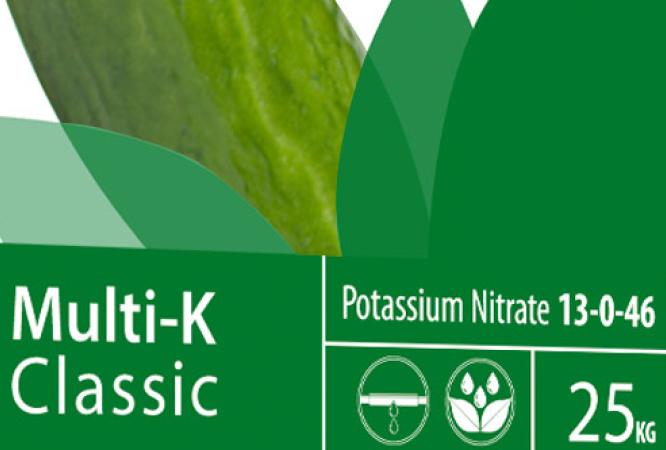Fertilization recommendation for growing carrots with Haifa fertilizers, to achieve optimal plant nutrition & excellent yield
Growing medium: open field.
Plant population: 1,800,000-2,000,000 Seeds/ha.
Expected yield: 60-80 T/ha.
Important note: The application of chloride fertilizers should be avoided since this element severely reduces carotene content of the carrot.
Recommended rates of nutrients (Kg/ha):
| N | P2O5 | K2O | CaO | MgO |
|---|---|---|---|---|
| 120 | 100 | 300 | 100 | 50 |
A. Base-Dressing
Apply at this stage the organic manure (20 T/ha), 20% of N and K2O and the entire amount of phosphate
| Required nutrients (Kg/ha) | Recommended fertilizers (Kg/ha) | ||||||
|---|---|---|---|---|---|---|---|
| N | P2O5 | K2O | MgO | SOP | SSP* | AN | Epsom salt** |
| 30 | 75 | 60 | 65 | 110 | 530 | 100 | 500 |
* SSP = Single-superphosphate (19% P2O5).
** Epsom salt = MgSO4 (13% MgO).
B. Side-Dressing
| Days after sowing | Nutrient demand (Kg/ha) | Recommended fertilizer | |||
|---|---|---|---|---|---|
| N | P2O5 | K2O | AN | Multi-KMg* | |
| total | 90 | - | 240 | 70 | 620 |
| 30 | 45 | - | 120 | 35 | 310 |
| 60 | 45 | - | 120 | 35 | 310 |
*Multi-KMg = Multi-K enriched with Mg (11-0-39 + 4%MgO).
For more information on Haifa potassium nitrate products' benefits and applications, visit Multi-K™ potassium nitrate fertilizers.
Recommendations prevailing in the UK
Growing Medium: Open field.
Soil type: Sandy silt.
Cultivars: Royal Sluice PX55392 ; Nairobi.
Expected yield: 50 MT/ha.
Base-Dressing
| N | P2O5 | K2O | MgO |
|---|---|---|---|
| (Kg/Ha) | |||
| 150 | 100 | 125 | 50 |
Top-Dressing
1. Multi-KMg 200 kg/ha, 86 days after sowing.
2. Foliar spray of boron and manganese.
Baby carrot – Fertilization program from South Africa^
Growth period: 80-120 days.
Yield: 35 MT/Ha.
| N | P2O5 | K2O | |
|---|---|---|---|
| <----------------------Kg/Ha------------------------> | |||
| B.D. | 40 | 345 | 120 |
| T.D* | 40 | 0 | 120 |
| Total | 80 | 150 | 240 |
* 75 Kg/Ha of K2O are fertigated during vegetative development, as Multi-K, combined with A.N.
Additional 55 Kg/Ha of K2O are sprayed as Multi-K during bulking up stage.
^ Farm: Crest International , Bapsfotein.
Source: O. Rottenberg, 1994.
Macro elements removed by 1 ton marketable product
(In Baby Carrot )
| N | P2O5 | K2O | CaO | Mg | S |
|---|---|---|---|---|---|
| ---------------------------------------------------Kg / ton----------------------------------------- | |||||
| 3.8 | 1.37 | 6.0 | 1.4 | 1.66 | 1.5 |
“White” Carrots (parsnips)
Macro elements removed by 1 ton marketable product
(In Witwortel=White Carrot )
| N | P | K | Ca | Mg | S |
|---|---|---|---|---|---|
| ---------------------------------------------------Kg / ton----------------------------------------- | |||||
| 13.4 | 4.3 | 18.0 | |||
Source: Kinoch’s flyer, RSA. Processed by Frans Lourens, Haifa, RSA, May, 1999.
Plant analysis guide
Nutrient sufficiency ranges (source: A & L, Agronomy Handbook, Ankerman & Large Eds.)
| Carrots | N | S | P | K | Mg | Ca | Na | B | Zn | Mn | Fe | Cu | Al | Mo |
|---|---|---|---|---|---|---|---|---|---|---|---|---|---|---|
| ------------------------ % ------------------------- | --------------- p.p.m --------------- | |||||||||||||
| From | 3.50 | 0.30 | 0.25 | 3.0 | 0.25 | 1.50 | 0.01 | 20 | 25 | 50 | 75 | 5 | 20 | |
| To | 6.0 | 0.75 | 0.80 | 7.0 | 1.0 | 4.0 | 0.20 | 80 | 60 | 200 | 250 | 20 | 300 | |
Plant part & sampling procedures
| Growth stage | Plant part |
|---|---|
| At mid-growth before root enlargement | Petiole of young mature leaf |
Source: https://www.hortnet.co.nz/publications/guides/fertmanual/vege2.htm#I7
Umbelliferae (carrots, parsnips, celery)
Nutrient requirements
Total nitrogen (kg N/ha):
| Celery | 350 |
| Spring carrots | 200 |
| Carrots and parsnips | 100 |
Target Olsen P values
| Phosphate retention | |||
|---|---|---|---|
| 0 - 40 | 41 - 75 | 76 - 100% | |
| Carrots and parsnips | 35 - 45 | 46 - 55 | 56 - 75 |
| Celery | 45 - 55 | 56 - 75 | 76 - 90 |
Recommended method of P application: Broadcast.
Target K values
| Soil texture | |||
|---|---|---|---|
| Sand | Loam | Clay | |
| Carrots and parsnips | 8 | 10 | 12 |
| Celery | 12 | 15 | 20 |
Recommended method of K application: Broadcast and fertigation.
Optimum pH range
| carrots | 5.6 - 6.7 |
| Parsnips | 5.6 - 7.1 |
| Celery | 6.1 - 7.0 |
Nutrient uptake (kg/ha)
| Crop | Yield | (Ton/ha) | N | P | K | Ca | Mg |
|---|---|---|---|---|---|---|---|
| Carrot | foliage | 15 | 72 | 5 | 62 | - | - |
| roots | 80 | 121 | 27 | 194 | - | - | |
| Top-weight | 79 | 242 | 34 | 313 | 121 | 24 | |
| Royal Chantenny | 31 | 96 | 16 | 165 | 21 | 6 | |
| Parsnips | roots | 44 | 146 | 36 | 183 | - | - |
| Celery | 80 | 307 | 79 | 984 | 228 | 38 | |
Tissue analysis
Critical N, P and K concentrations (%) in whole plants:
| Plant age (days) | |||||
|---|---|---|---|---|---|
| 40 | 80 | 120 | 160 | ||
| Carrots | N | 3.2 | 2.4 | 1.8 | - |
| P | 0.38 | 0.32 | 0.27 | 0.24 | |
| K | 4.3 | 2.8 | 1.9 | - | |
| Parsnips | N | 3.8 | 3.2 | 2.8 | 2.0 |
| P | 0.59 | 0.48 | 0.39 | 0.32 | |
| K | 5.0 | 3.8 | 2.8 | 2.2 | |
Specific deficiency symptoms
| Carrots | |
|---|---|
| N | Uniformly pale yellow with fine leaflets. |
| P | No yellowing, old leaves purple. Distinguish from carrot fly attack by examining damage on tap root and from carrot 'mottley dwarf' virus by yellow young leaves and red or purple older leaves. |
| S | As for N, distinguish by plant analysis. |
| K | Old leaves scorched and collapse, later entire petioles look water soaked before drying and collapsing. |
| Ca | Water soaked appearance of petioles (like K) but more restricted, the distal part and leaf staying green initially. Roots may have a brown core. |
| Mg | Similar to N deficiency but red tints near margins and leaves not so fine; can also be confused with 'mottley dwarf' disease; distinguish by analysis. |
| Mn | Uniform pale yellowish-green; often patchy distribution in field. |
| Cu | Youngest leaves very dark green and fail to open. |
| B | Corky splits in petioles; roots split showing core, which may contain hollows, browning of skin on root giving dull appearance. |
| Parsnips | |
| S | New, pale leaves have sharply toothed margins and a fine network of recessed veins. |
| Ca | Water soaked petiole resulting in collapse of leaflets. |
| Mn | Marginal and interveinal chlorosis of most leaves; distinguished from Mg and K deficiency because chlorotic areas remain pale green rather than yellow and whole plant affected. |
| B | Older, pale leaves may have a red margin; section of root shows discoloration around the central xylem. |
For more information on Haifa potassium nitrate products' benefits and applications, visit Multi-K™ potassium nitrate fertilizers.
For more information on NPK fertilizers, visit our Water Soluble NPK Fertilizers page
Need more information about growing carrot ? You can always return to the carrot fertilizer .




